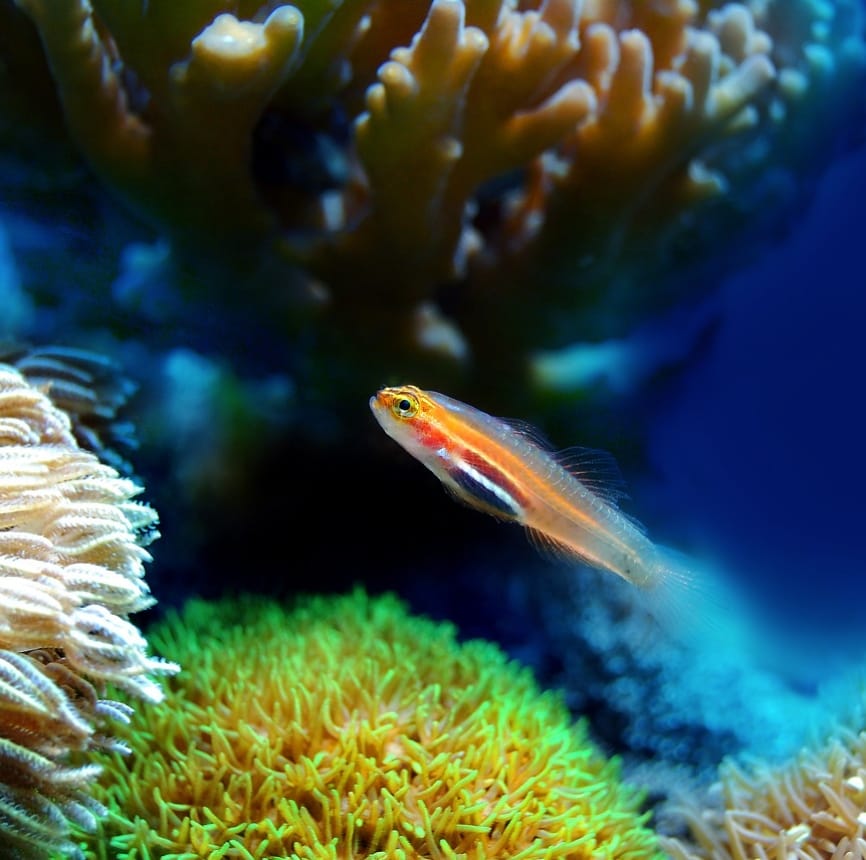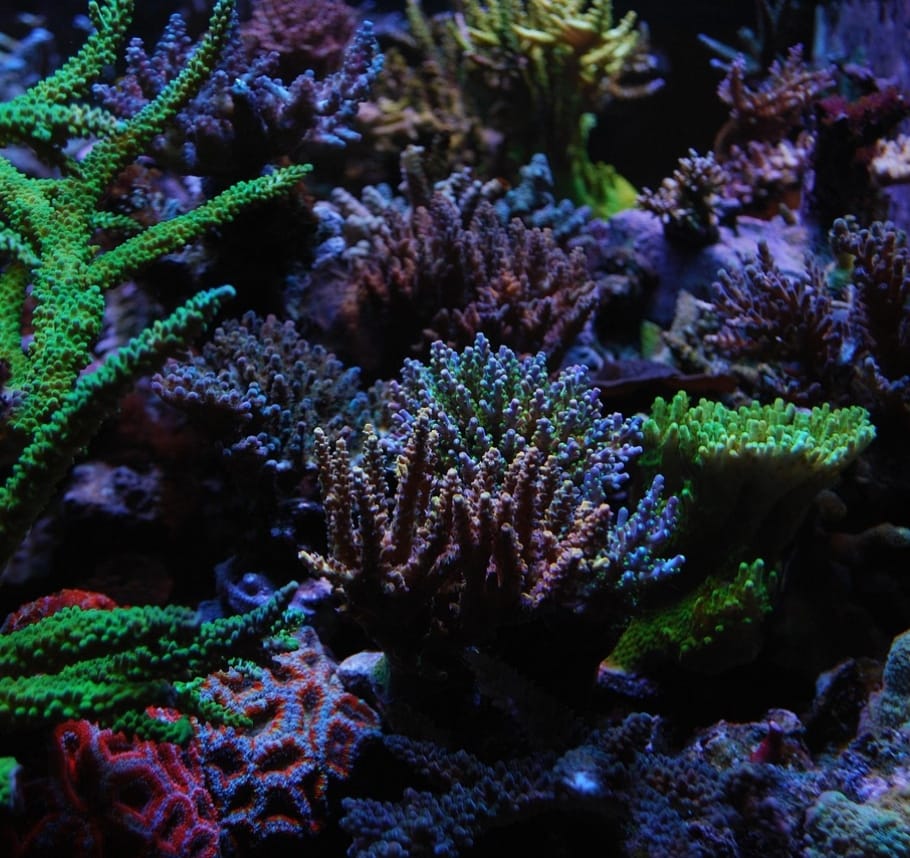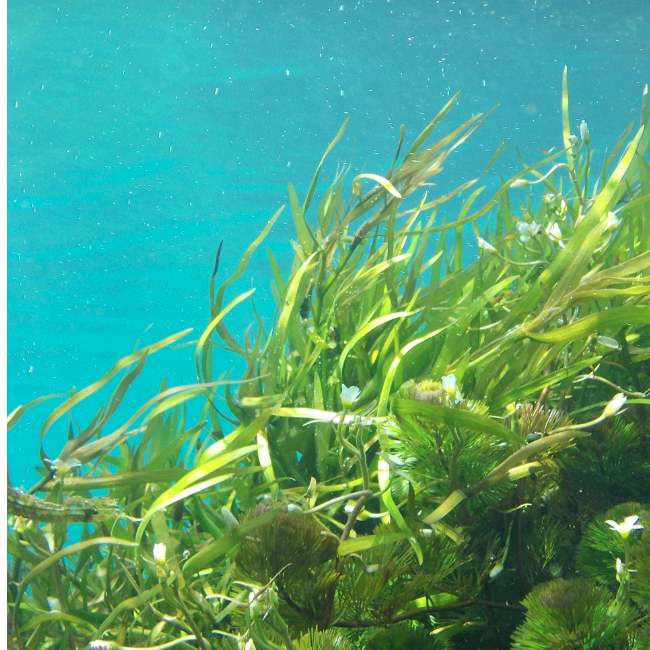Lesson Title: Exploring Underwater Ecosystems
Dive into the deep end (35,876 feet, to be exact!) with your students and explore the fascinating mysteries of underwater ecosystems!
This engaging high school science lesson brings the vibrant and complex world beneath the waves to life. Students will learn about the different types of underwater ecosystems—like coral reefs, kelp forests, and deep-sea vents—while examining the species that call them home and the delicate balance that keeps these environments thriving.
With a mix of direct instruction, hands-on research, and an interactive Goosechase scavenger hunt, this lesson turns learning into an adventure and empowers students to think critically about conservation and the health of our oceans.
Grade: 9 - 11
Subject: Biology, Environmental Science
Learning Objectives:
- By the end of this lesson, students will:
- Identify and describe different types of underwater ecosystems (e.g., coral reefs, kelp forests, deep-sea vents, estuaries).
- Explain the importance of biodiversity and interdependence in underwater ecosystems
- Analyze threats to these ecosystems and propose conservation strategies.
- Demonstrate their understanding through an interactive Goosechase scavenger hunt.
Materials:
- Mobile devices (tablets, phones, or laptops) with the Goosechase app installed
- Projector or smartboard
- Printed or digital research templates (optional)
- Access to Goosechase platform (app or browser)
Preparation:
- Create an Experience on the Goosechase app with a series of Missions focussed on ecosystems.
- Develop Missions that require students to demonstrate their understanding of what they have learned. Example Missions:
- Quick Quiz: Name 3 species commonly found in coral reefs.
- Team Snap: Take a group photo making your best impression of a jellyfish!
- Match It: Match the following organisms to their underwater ecosystem.
- Voice It: Record a 15-second PSA about saving the kelp forests.
- Draw It: Sketch a food web from any underwater ecosystem. Upload a photo of your drawing.
- On the Hunt: Find an everyday object that reminds you of something from your assigned ecosystem. Explain the connection.
- What’s Next?: Research an organization dedicated to preserving underwater wildlife. Share their mission, vision, and why they spoke to you.
- Adapt the difficulty of the Missions based on the proficiency levels of your students to keep the activity inclusive and engaging for everyone.
- Prepare hints or resources that might help students solve the Missions if needed.
- Divide students into teams and assign each team a mobile device with the app, or have students complete the scavenger hunt individually.
- Run your Experience during one class period or longer.
- App Set-Up
- Dedicate time to ensuring all students have the Goosechase app downloaded and joined to the Experience to avoid any tech issues.
Lesson Plan Outline:
- Introduction
- Show a short video clip or underwater scene (e.g., from Blue Planet or National Geographic) to grab attention. Ask students:
- “What types of ecosystems do you see here?
- “Why do you think these ecosystems matter?”
- Show a short video clip or underwater scene (e.g., from Blue Planet or National Geographic) to grab attention. Ask students:
- Key Concept Direct Instruction
- Types of underwater ecosystems (coral reefs, mangroves, kelp forests, open ocean, deep sea, estuaries)
- Key components (producers, consumers, decomposers, abiotic factors)
- Ecosystem services and the importance of biodiversity
- Human impact (pollution, overfishing, climate change, ocean acidification)
- Encourage student questions and discussion throughout.
- Student Research
- Individually or in a group assign each student or group a specific underwater ecosystem. Provide guiding questions for research such as:
- Where is this ecosystem located?
- Individually or in a group assign each student or group a specific underwater ecosystem. Provide guiding questions for research such as:
- What species live here?
- What roles do these species play?
- What are the current threats?
- How can it be protected?
- Optional Extension: Have groups present their findings briefly (2–3 minutes per group) or submit a short write-up.Goosechase Scavenger Hunt
- Goosechase Scavenger Hunt
- Read through Missions with students, emphasizing the importance of evidence and analysis in their responses.
- Monitor progress and provide assistance as necessary.
- If working in teams, encourage them to strategize and collaborate to solve the Missions.
- Sit back and enjoy watching your students collaborate and demonstrate their learning.
- Debrief and Reflection
- Review the activity, discussing which missions were the most challenging or fun.
- Discuss what they have learned, such as what surprised them the most about underwater ecosystems
- Discuss how teams collaborated and solved problems together.
- Discuss students’ favourite ecosystem and why
- Optionally, award prizes to the team(s) with the highest score.
Optional Post-Experience Activities:
- Poster or Powerpoint Presentation
- As a group, or individually, students research an ecosystem. Students highlight important parts of the ecosystem, their location, threats, and how to protect them. They then share their findings with the class.
- Species Survival Guide
- Students pick a species from an underwater ecosystem and write a “survival guide” from its point of view. It could include:
- Its role in the food web
- How it interacts with its environment
- How it avoids predators
- What threatens its survival
- What it “wants humans to know” to help it survive
- Students pick a species from an underwater ecosystem and write a “survival guide” from its point of view. It could include:
- Class Debate
- Organize a classroom debate, where students argue “Are Humans the Biggest Threat to Underwater Ecosystems?”
- Divided into teams, students research, gather evidence, and present their findings in a debate style format.
- Organize a classroom debate, where students argue “Are Humans the Biggest Threat to Underwater Ecosystems?”
- Non-profit Connection
- Students research different organizations doing the work to conserve our waters. They put together a report, creative presentation, or a Goosechase sharing the organization’s mission, vision, and how their work is impacting the world.
Assessment
- Participation and teamwork during activities.
- Engagement with Goosechase missions.
- Informal check-ins on understanding of ecosystems
- Assessment of any follow-up activities, i.e., Presentation, Survival Guide and Debate.
- Optional: Exit ticket – “One thing I learned today was…” or “One way I can help protect underwater ecosystems is…”
Ready Made Experience To Try

Under the Surface: Exploring Underwater Ecosystems
Dive into ocean life! Show what you’ve learned about underwater ecosystems through fun, fast-paced photo, video, and quiz challenges.
Get your own copy!

Coral Reefs: An Ecosystem Adventure
Swim through the colorful world of coral reefs! Complete missions to uncover species, threats, and solutions in this vibrant underwater ecosystem.
Get your own copy!

Kelp Quest: Life Beneath the Canopy
Explore the towering underwater world of kelp forests! Complete challenges to uncover the species, structure, and survival secrets of this ocean ecosystem.
Get your own copy!
Want a copy of this lesson plan to use with your class?
What is Goosechase EDU?

Under the Surface: Exploring Underwater Ecosystems
Dive into ocean life! Show what you’ve learned about underwater ecosystems through fun, fast-paced photo, video, and quiz challenges.

Coral Reefs: An Ecosystem Adventure
Swim through the colorful world of coral reefs! Complete missions to uncover species, threats, and solutions in this vibrant underwater ecosystem.

Kelp Quest: Life Beneath the Canopy
Explore the towering underwater world of kelp forests! Complete challenges to uncover the species, structure, and survival secrets of this ocean ecosystem.
Goosechase is an online platform that helps educators create and run interactive learning experiences in their classrooms and beyond. Sign up and try creating an Experience, or contact us to learn more about our school and district-wide solutions!





